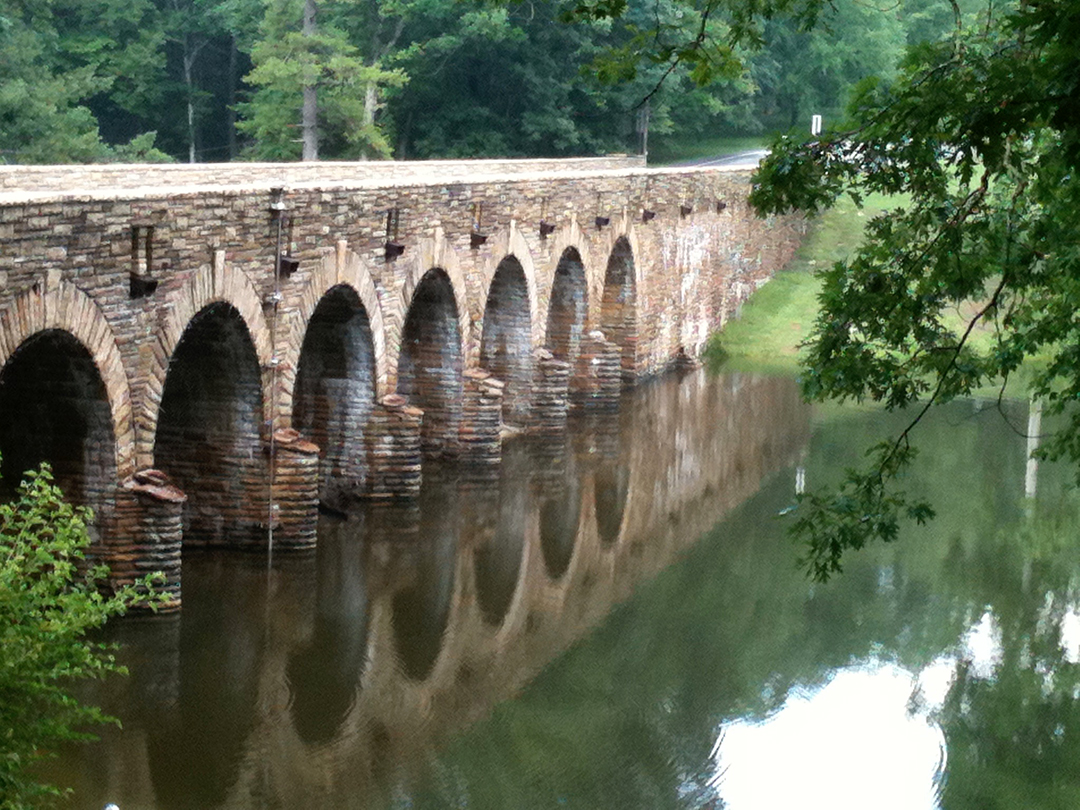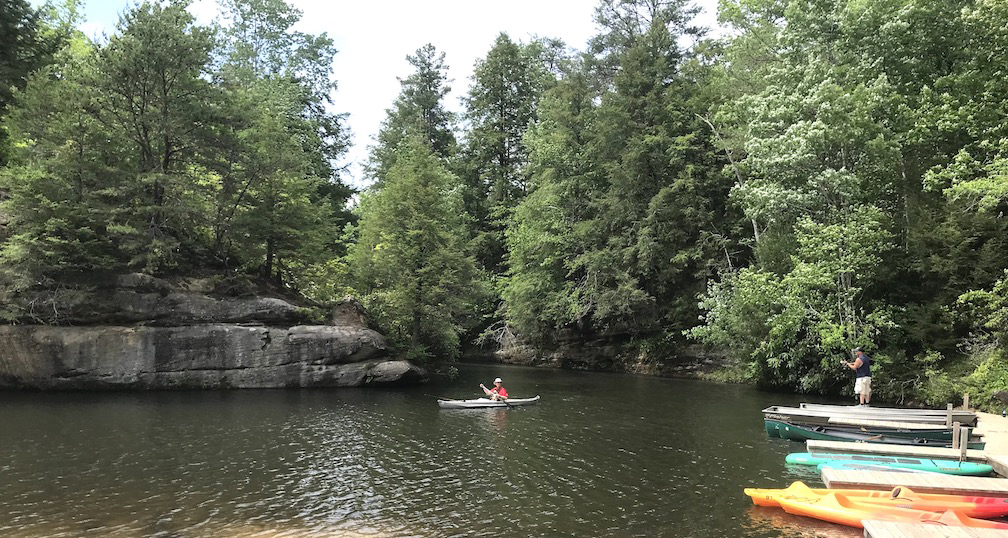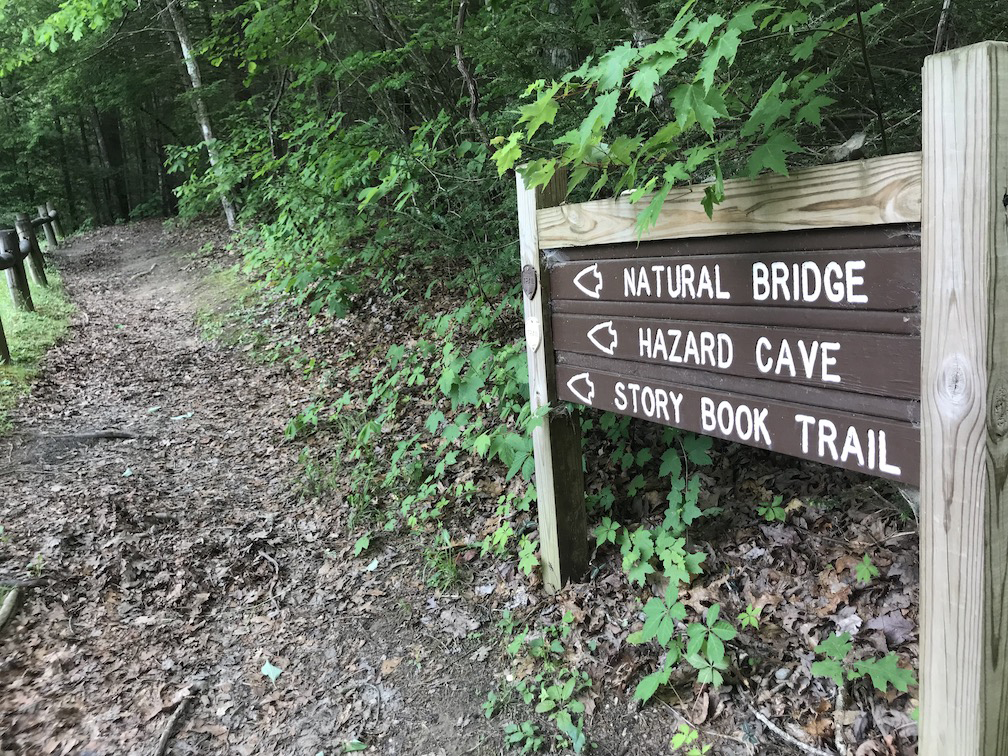| |
CCC’s handiwork lives on across Tennessee state parks
By Tom Adkinson
August 19, 2022

This statue of a muscular CCC laborer represents the 70,000 young men who worked in CCC camps across Tennessee. Image by Tom Adkinson
|
JAMESTOWN, Tennessee – A bronze statue of a muscular 6-foot-tall laborer stands outside a 1930s stone building in the backwoods of the Cumberland Plateau. The impressive sculpture and the building’s contents tell stories of economic times far worse than today’s challenges.
They are reminders of the Great Depression of the 1930s, when unemployment was rampant and hard times swept the nation.
The statue and building are at Pickett State Park, and they recognize the lasting efforts of 70,000 young men who worked for the Depression-era works program called the Civilian Conservation Corps in Tennessee alone.
Nationwide, the New Deal program put more than 3 million men to work over its 9-year existence. That was about 5 percent of all American men.
More formally, this is Pickett CCC Memorial State Park, one of 17 the CCC built or worked in. There were among Tennessee’s first state parks, and you can both see and experience CCC handiwork today.

This CCC-built seven-arch bridge at Cumberland Mountain State Park is one of the most photographed locations in the state park system. Image by Tom Adkinson
|
One beautiful and often-photographed example is an elegant stone bridge with seven arches at the edge of Lake Byrd in Cumberland Mountain State Park near Crossville.
Elsewhere, there are stone cabins, rock walls, trails and overlooks we wouldn’t have in many parks were it not for the CCC.

Five CCC-built cabins are popular attractions at Pickett CCC Memorial State Park. Newer cabins are nearby. Image by Tom Adkinson
|

Just ask for the key to the CCC museum at the park’s office. The information inside explains the lasting impact of the New Deal works program. Image by Tom Adkinson
|
Five of Pickett State Park’s cabins were built by the CCC, as was the building next to the statue of the laborer. That building, once the park’s office, now is a museum to the CCC.
Pickett is a casual place. Just ask someone in the current office for a key to the museum, and then enter for a history lesson more vivid than any you ever had in a classroom.
One of the first displays tells about the museum building itself. CCC Companies 447 SP and 1471 S-65 built it in 1935 under the direction of the National Park Service. CCC construction was admired for its design and durability, which is obvious here in the oak and chestnut timbers, limestone interior walls and sandstone exterior.

The CCC dammed a creek at Pickett State Park to create a 12-acre lake the state stocks with trout. Image by Tom Adkinson
|
The crews that built Pickett were among 77 CCC camps throughout Tennessee. At Pickett, they dammed a creek to create a beautiful 12-acre lake, cut trails, built cabins and erected a circular water tower now in the middle of a camping area.
The CCC was created in 1933, and by the time it ended in 1942, its Tennessee accomplishments included 98 fire towers and houses, nearly 4,000 miles of forest telephone line, 1,500 miles of roadways, 388,000 check dams and more than 36 million trees planted for erosion control. They planted another 27 million trees in reforestation projects.
Parks the CCC touched stretch from Cove Lake in the east to T.O. Fuller in the west to Reelfoot in the northwest. Parks such as Norris Dam and Chickasaw also have CCC-built cabins.
Pickett’s manager Travis Stover says the CCC-built cabins have “an authentic cabin feeling,” while 10 newer cabins are “more like home.”
“If not having a TV is a deal-breaker for you, pick one of the newer cabins,” he said with a smile.

The first of Pickett’s 58 miles of trails through the hills and hollows of the Cumberland Plateau were the CCC’s handiwork. Image by Tom Adkinson
|
Regardless of whether you are a day visitor, a cabin guest or a camper (26 sites), Pickett has 58 miles of hiking trails and picnic tables by the lake. There are canoes and kayaks to rent, and the Tennessee Wildlife Resources Agency stocks trout in the lake several times a year.
Pickett is remote, remote enough that it became the first state park in the Southeast to earn silver-tier International Dark Sky Park designation. Without the light pollution of any cities, you can see into the night sky almost as you could in the wide-open spaces of the American West.
Always check to see whether Ranger Michael Hodge is offering a nighttime viewing program. His “classroom” is the 3,000-acre Pogue Creek Canyon State Natural Area, which is adjacent to Pickett.
Trip-planning resources: TNstateparks.com, UpperCumberland.org and TNvacation.com
(Travel writer Tom Adkinson’s book, 100 Things To Do in Nashville Before You Die, is available on Amazon.com.
|



